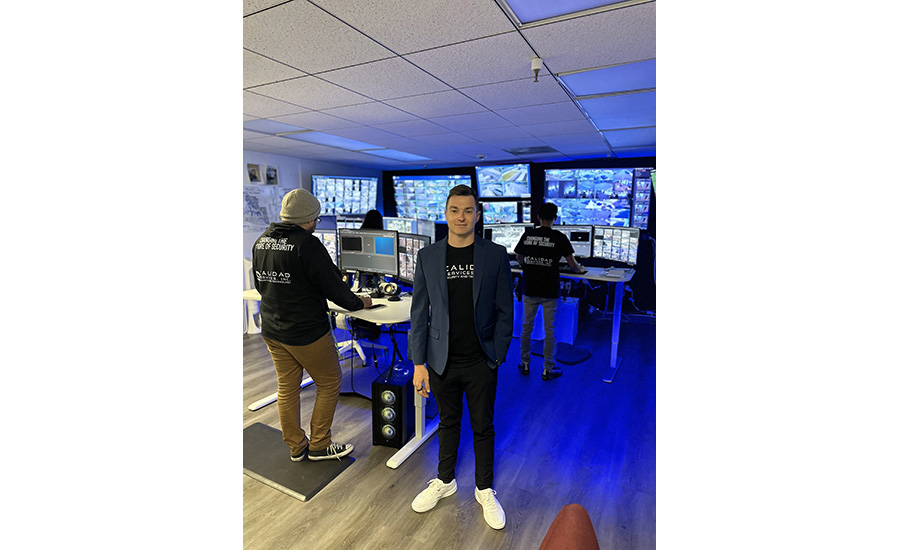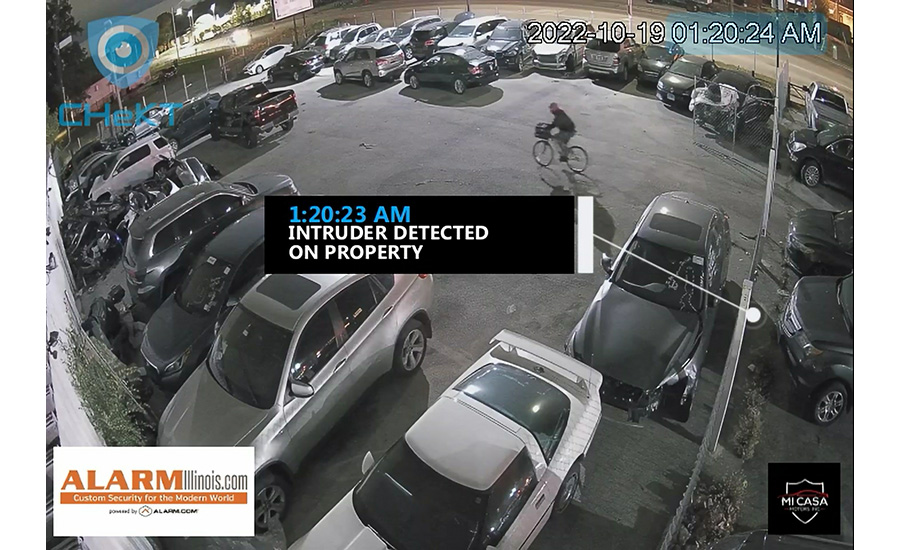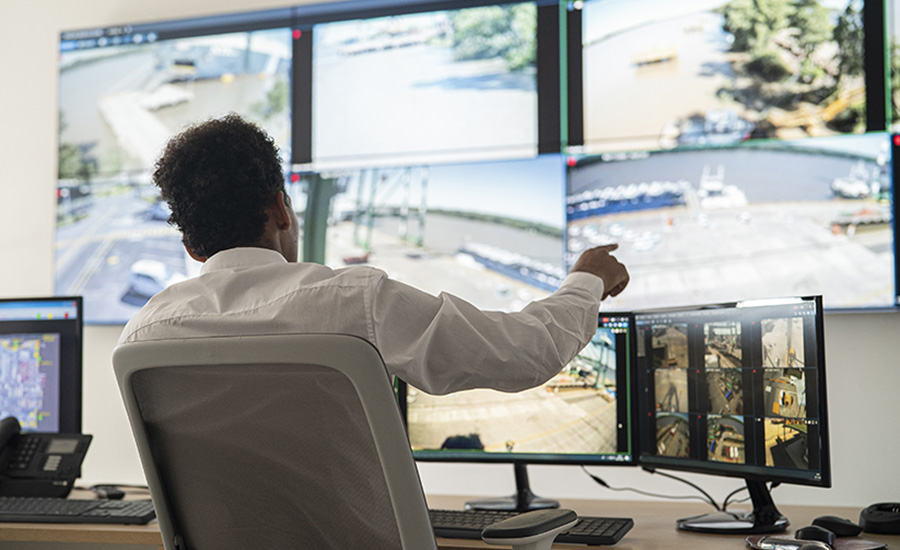In the ever-evolving landscape of security technology, remote video monitoring has emerged as a powerful solution for enhancing surveillance and safeguarding assets. Security dealers and integrators operating in this sector face unique challenges and opportunities as they strive to harness live video to provide effective and newfound services to their clients.
SDM tapped the experiences of a half dozen installing security contractors — large and small — to find out their approaches to remote video and where they are finding success. They shed light on the latest trends, best practices and emerging technologies that can empower fellow security pros to excel in the remote video monitoring sector.
By embracing the knowledge shared in this article, security dealers and integrators can navigate the complexities of this increasingly disruptive sector with confidence and propel their businesses to new heights of success.
What Remote Video Success Looks Like
Robby Burleson has experienced his fair share of successes in the integration business since launching ESI Fire & Security Protection, Channelview, Texas, in 1999. But he credits his decision to enter the remote video monitoring game headlong several years ago as possibly his most consequential business decision yet.
“After all these years of putting video systems up and catching criminals in the act, the results were always the same thing at the end of the day: That customer never could get an arrest even though we had great video of a person,” Burleson says. “The cops just don’t have time to really work on it. They don’t. That’s just the real world environment. They’re too busy dealing with all this other stuff going on.”
The frustration of not being able to pre-empt crimes for his customers prompted Burleson to seek a different type of solution altogether: “Let’s go prevent the crime before it happens. So, the proactive approach is what we went after.”
“After all these years of putting video systems up and catching criminals in the act, the results were always the same thing at the end of the day: That customer never could get an arrest even though we had great video of a person.”
— Robby Burelson, ESI Fire & Security Protection
Burleson initially explored the idea of launching his own in-house remote monitoring operation but ultimately decided to partner with Netwatch through his relationship with wholesale central station NMC. Netwatch, a provider of proactive video monitoring services based in Ireland, had recently entered the North American market after merging with NMC. In 2018, ESI became Netwatch’s first dealer partner in the United States.
In the first year, revenues from remote video services amounted to 2 percent of ESI’s total revenue. It’s been a steady rise since. “Last year, we were 30 percent of revenue of our company; and in 2023, we are 35 percent of the revenue so far and are going to hit 40 percent by the end of the year,” Burelson says. “So it’s made a pretty good trajectory.”
ESI, with around 35 employees, has experienced considerable growth in deploying mobile surveillance trailers outfitted with height-adjustable security cameras, two-way audio and other features. The units are solar-powered and also come equipped with backup batteries and generators.
“We started off just in the construction business, but from there we got pulled into several different markets,” Burelson says. “It just keeps growing out like crazy, like a root system. We’re in the utility space. We’re in mass transportation space. We’re in real estate space, where vacant buildings are getting vandalized for copper. Or it’s a building where homeless people are coming in and making camps out of them. In the hospital space we’re watching parking lots because criminals try to come in steal catalytic converters.”

ESI’s remote video origin story and blossoming business is not dissimilar to other security providers interviewed for this story. The case of “There’s got to be a better way” and recognizing the potential in the marketplace is not uncommon.
David Haddad, proprietor of Alarm Illinois near Chicago, founded the company almost 25 years ago. Today with 80,000 residential and commercial accounts, Haddad explains his first 15 years in business “was smooth sailing.” Nothing much ever changed; hardware, panel, three doors and a motion. Home automation eventually arrived and suddenly his RMR per account went from $29 to $59. Then DIY disruption halted that cash cow when customers began hightailing it to big box stores for their own gear.
“So it’s really been a challenge trying to figure out where our industry is going,” Haddad expresses. “My frustration as an alarm provider is that a lot of my customers are friends, family, people we care about. They hire us and trust us to protect their property. And everything’s changed. I used to be happy selling somebody an alarm system, a camera system.”
The concept of providing “peace of mind” can wither when contrasted with the reality of so many criminal acts going unanswered. Nowadays, Haddad feels he has the future of the industry well within his sights.
“In my heart now today, alarm and security systems don’t work, for several reasons. No. 1, police response times have tripled, with crime going up by 40 percent [in the Chicago area],” Haddad says. “We do all the video monitoring for all the video gaming locations in the state of Illinois, which is like 6,000 locations. Not once have we caught anybody in the act. I get calls from law enforcement and all that we are doing is playing back what happened.”
Haddad had long been familiar with remote guard service. But it wasn’t until the practical application of video analytics and artificial intelligence (AI) arrived in the past few years that he began to investigate the potential for building out a service offering in earnest.
“I knew that if we could take the analytics of the camera and turn it into an alarm trigger, we’d have something special,” Haddad says. “We’d be able to detect and deter the event before the property was damaged or the act was committed.”
Haddad’s exploratory work to find the right technology partners came to fruition through his relationship with wholesale monitoring provider Rapid Response Monitoring Services. With Rapid Response facilitating the partnerships, Haddad ultimately began working with a solution based on the OPTEX Bridge, created by CHeKT, which allows the pairing of local cameras to alarm panel zones. Pairing cameras with these zones gives a central station operator access to see what caused an alarm to occur.
Haddad is fine-tuning a virtual security guard service with remote video by putting it through its paces. “We’ve had more apprehensions with a 70-account beta test in six months than I had in 10 years,” he says. “By detecting the threat before the internal alarm goes off, we’re able to feed real-time information to law enforcement or the key holder to the business. And now, when the police are responding to two suspicious cars and six guys with masks and hoodies, I can show you video of four squad cars showing up.”
Deployment Best Practices
Ensuring deployment success with remote video applications is no simple feat. There are numerous variables at play, and those begin with a thorough site assessment of the customer’s premises, explains Sean Foley, senior vice president, Interface Systems, Earth City, Mo. The exercise encompasses the layout, size, points of entry/exit and potential blind spots.
“This evaluation helps determine the optimal camera placement and the number of cameras required for comprehensive coverage,” Foley says. “For consumer-facing businesses such as retail or restaurants, Interface places special attention to camera positioning to not only cover high-risk areas but also to minimize the impact security cameras may have on the shopping or dining experience.”
Network bandwidth and video storage considerations are also integral to remote video monitoring implementation. For some end users, it will be key to determine the appropriate video storage duration based on regulatory requirements and operational needs. Cloud-based storage solutions can provide flexibility and scalability in some deployments.
“Interface assesses the customer’s network bandwidth to ensure it can handle the streaming and storage requirements of the video monitoring system,” Foley says. “Apart from being a security services provider, Interface also has expertise in the deployment of managed network services. We can easily upgrade the network at any location or supplement the location with wireless backup options where needed to implement an effective monitoring solution.”

As with any network-based solution, implementing strong cybersecurity measures will be needed. This includes using strong passwords, enabling encryption, regularly updating firmware and applying security patches. Additionally, consider network segmentation and firewalls to isolate the video system from other network segments.
Justin Stearns, innovation specialist, Chimera Integrations, Plattsburgh, N.Y., advises installers to deploy cameras with more advanced analytics to reduce costs to the customer by reducing false detections, such as people or vehicle detection. Also consider factors such as resolution, low-light performance, scalability and integration capabilities to ensure that the system is tailored to meet specific security needs.
Stearns adds, “Are the cameras compatible with Immix or any other software the monitoring company is using? Test the solution! Set up the solution
Chimera Integrations will typically use advanced analytics to check in on the installation. Also advised, dealers should be clear with the monitoring center about dispatching and how events should be dispatched. Dispatching can get out of hand and costly if this isn’t done properly, Stearns says. The customer won’t be happy, nor will the police.
“Checking in on the system and verifying proper results and also negating false reports is very important,” Stearns says. “Check the tech. This will save costs for reporting and keep the monitoring service happy.”
Haddad offers a cautionary best practice to heed at times that is otherwise contrary to traditional business sensibility: The customer is not always right. Especially where it concerns a thorough site assessment and selecting the right gear to fit the job.
“In one instance, we made the mistake of listening to what the customer wanted instead of what we thought that they needed,” Haddad describes. “This was a car lot customer. He wanted us to install two security cameras, even though we really thought he needed four. He didn’t pay for those four. So we put up two.”
The customer was paying Alarm Illinois $199 a month. His property was vandalized and, sure enough, there was no video of the incident, which rendered the company’s service useless and caused the customer to cancel the service.
“Designing the proper protection of the property — and letting the customer know that if you want it to work, this is what it’s going to cost — is essential,” Haddad continues. “Instead of making a quick sale, stand firm and say, ‘You know, if you’re not willing to do it right, then you probably should be going with someone else.’ Because you don’t want to get the phone call that the system didn’t work as expected.”
“I knew that if we could take the analytics of the camera and turn it into an alarm trigger, we’d have something special. We’d be able to detect and deter the event before the property was damaged or the act was committed.”
— David Haddad, Alarm Illinois
Burleson also echoes the importance of communication with the end customer, especially where it concerns instructing them on design and performance expectations.
“Educating them is the most important thing. Other dealers are out there promising everything and just trying to get the sale,” he says. “We don’t want to just get the sale, we want to build that relationship and that partnership long-term.”
Burleson tells stories of unscrupulous competing dealers who spin outlandish performance tales such as a given camera can see a person of interest from 600 feet away. “That’s not going to be accurate in the monitoring world. Not at this time. I think in the future it will be, but not right now,” he says. “If they want to see further they have to get extra cameras, that’s just it. They don’t like to hear that, but when you can solve the problems and they believe in the technology it helps a lot more.”
Key Feature Sets
There are numerous feature sets that dealers and integrators can leverage with remote video monitoring to effectively enhance their clients’ security measures and deliver comprehensive surveillance solutions.
For starters, many remote video monitoring systems support two-way audio communication. This feature enables security personnel to not only observe but also interact with individuals on-site, providing warnings, instructions or assistance as needed. Here is where the ability to stop potential crimes in action can really shine, says Haddad.
“We started adding the 30-watt speaker horns that not only have the audible talk down through the central station, or the trigger talk down and sirens, but they sound like a train coming through your background,” he says. “We recognized that the regular lights and strobes on a regular active deterrence camera weren’t getting the job done, but by throwing up a $300 or $400 speaker horn, they know that somebody’s watching and something’s going on, so that that raises the level of deterrence.”
Two-way audio is especially huge for the remote guarding industry, says Blake Smallie, chief operating officer and co-founder, along with his father, of Calidad Services in Stockton, Calif. The father-son duo are one of the newest entrants into the remote guarding sector who recognized the power of remote video to transform what was first conceived as a manned guarding business.
Calidad, which also performs installation services, uses the Immix platform in its security operations center (SOC) to monitor and interact with their clientele’s camera and security systems.
“I now think 100 percent that every remote guarding site needs to have two-way audio,” Smallie says. “A lot of these cameras do have two-way audio nowadays. But we like to use IP loudspeakers. They’re like super, super loud. We scare the heck out of people when we hop on those. We do a lot of sites that don’t require it, but we highly recommend it because that’s our first line of defense every time — to let these trespassers know and to call them out by whatever they’re wearing.”
Virtual security guard services also leverage two-way audio, such as conducting a voice-down announcement to check in with employees or warn customers who might be behaving suspiciously, Foley says. Interface recently launched an AI-based autonomous voice-down solution to help retailers, restaurants and car wash chains to stop theft and vandalism before they happen.

“For businesses located in challenging neighborhoods, deploying security guards can be a dangerous and costly option,” he says. “With a team of remote security professionals monitoring locations via live video, and two-way audio with the ability to hear and speak directly to associates and/or customers, deploying a virtual security guard solution can offer a safe and cost-effective alternative.”
Two-way audio coupled with remote video is extending beyond traditional crime-prevention, Stearns explains: “Elevator monitoring is also becoming a standard, which is very interesting and opens a lot of opportunity for us. We just recently started getting quote requests for monitoring elevators. Couple two-way audio with the system and from both a life safety perspective and security perspective there really is no better solution.”
Seamless integration between remote video monitoring systems and other security systems, such as access control or alarm systems, is enabling security providers to correlate events, trigger actions and streamline response workflows.
These expanding service opportunities inspired Lafayette, La.-based Acadian Monitoring Services to launch what it calls SOC-as-a-Service, an offering the company began about six months ago. About two years ago the company exited the third-party alarm monitoring business to focus solely on video monitoring. The company’s experience with video monitoring services stretches back to 2008. In the beginning, the company struggled with “trying to be everything to everyone,” explains Senior Director Brandon Niles, so they pivoted to a standardized model and narrowed their focus on services they executed best. That shift was recently reversed.
“We are moving back to being everything to everyone because we’re seeing these new services that are bringing in other pieces of technology. So it’s not just video monitoring,” Niles says. “But it is work that can be done through video monitoring that helps out the entire operation.”
“It is also interesting to see how this is a much more effective form of security monitoring, and as analytics get smarter and smarter. In my personal opinion I think there will be a major decline in the use of traditional intrusion detection systems.”
— Justin Stearns, Chimera Integrations
One basic example is a large scrap company. With remote video, Acadian is helping protect their employees when dumping truckloads of material at night. “They also wanted us to tie in the scale measurements,” Niles says. “So now we’re going to be logging into the software and inputting the measurements when the trucks drive into the scales.”
The next big service opportunity most likely hasn’t even been pondered yet. And end users are sure to be a key player in divining novel ways to enhance their business operations by leveraging remote video and integrated solutions, Niles says.
“I’m really excited to see the client coming up with ways to make video monitoring work better for their operation,” Niles says. “Four years ago, they didn’t know what it was. Now they know what it is. And they’re trying to find ways to improve it, and make it work for them in different ways than what I ever envisioned. I always thought the dream was if you can provide a solution that helps them run their business during the day, but then secures them at night, you’ve got a product that no one’s going to be able to say no to. It’s going to pay for itself during the day, and to have that extra layer of protection at night is just a home run.”



